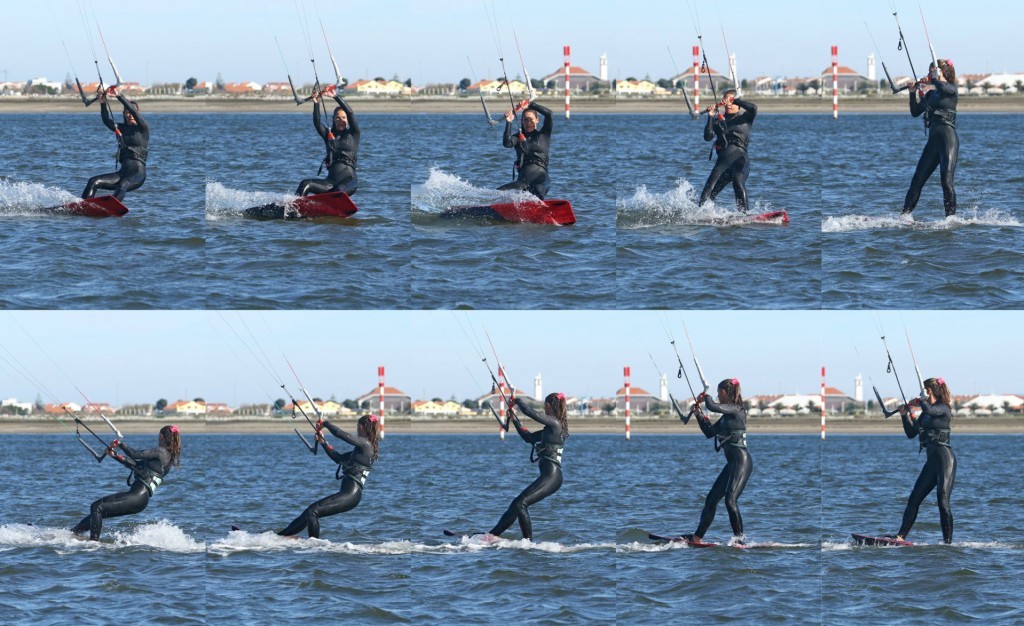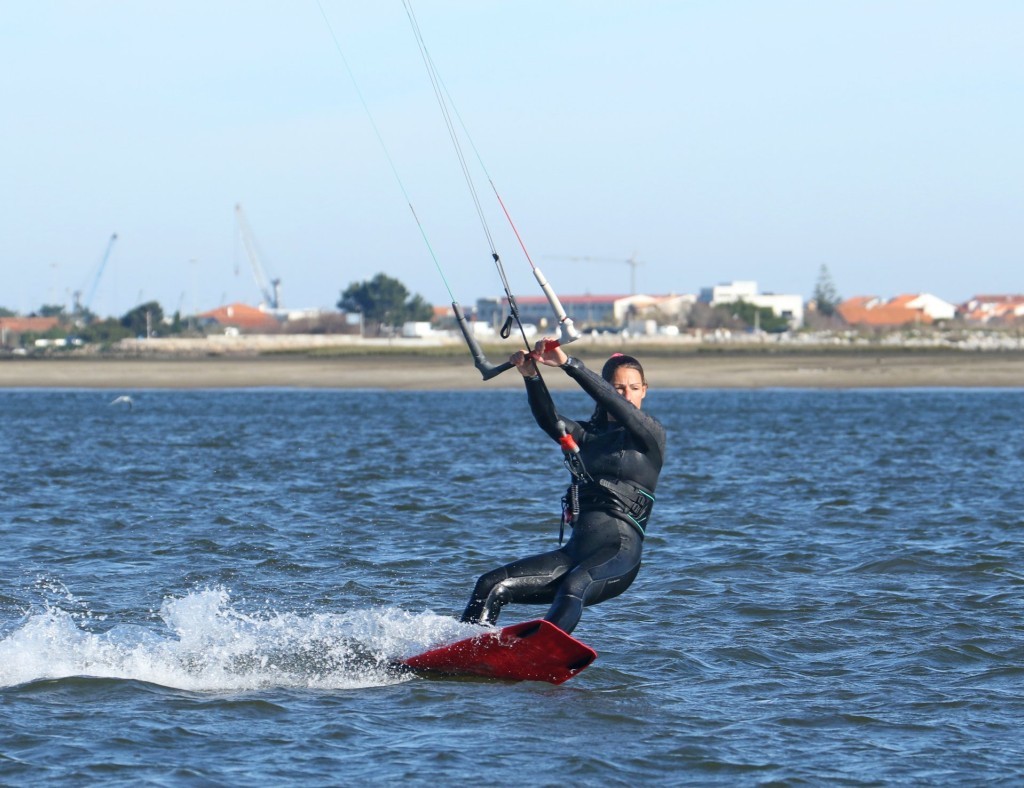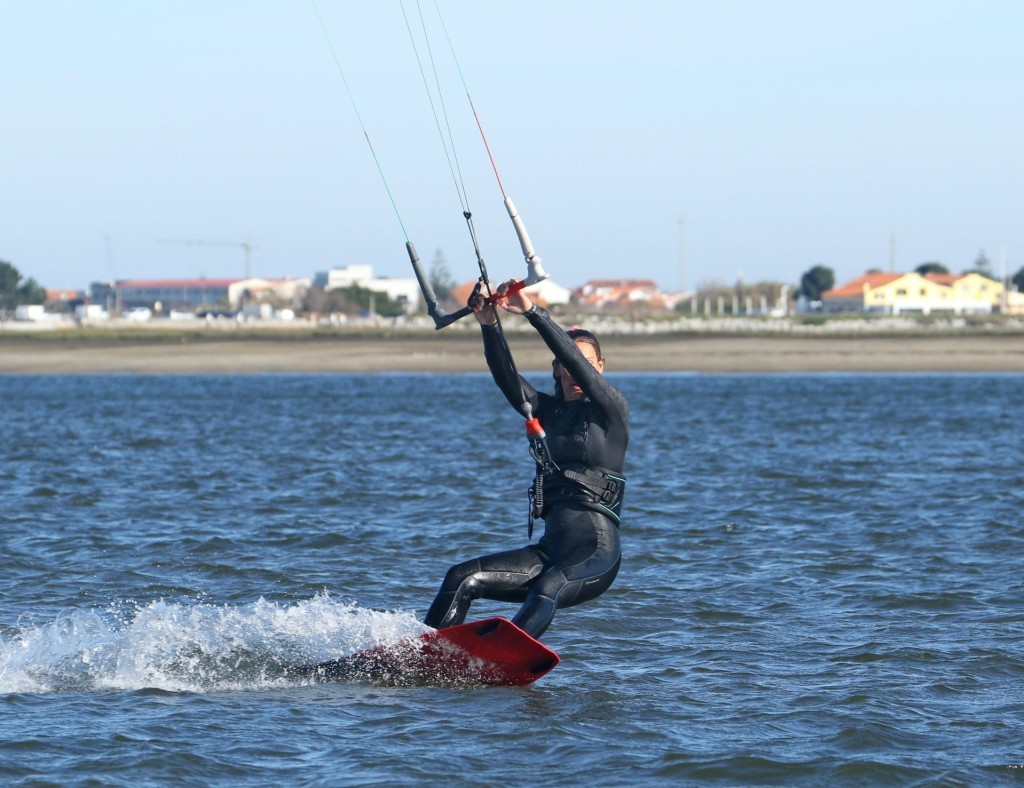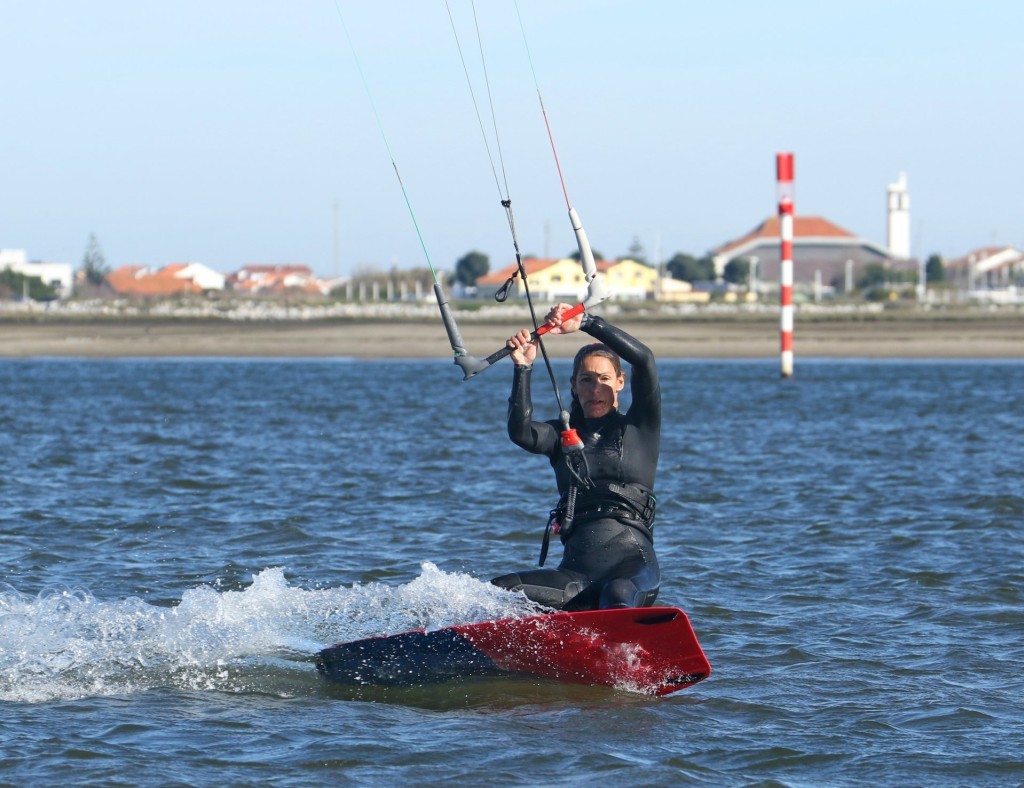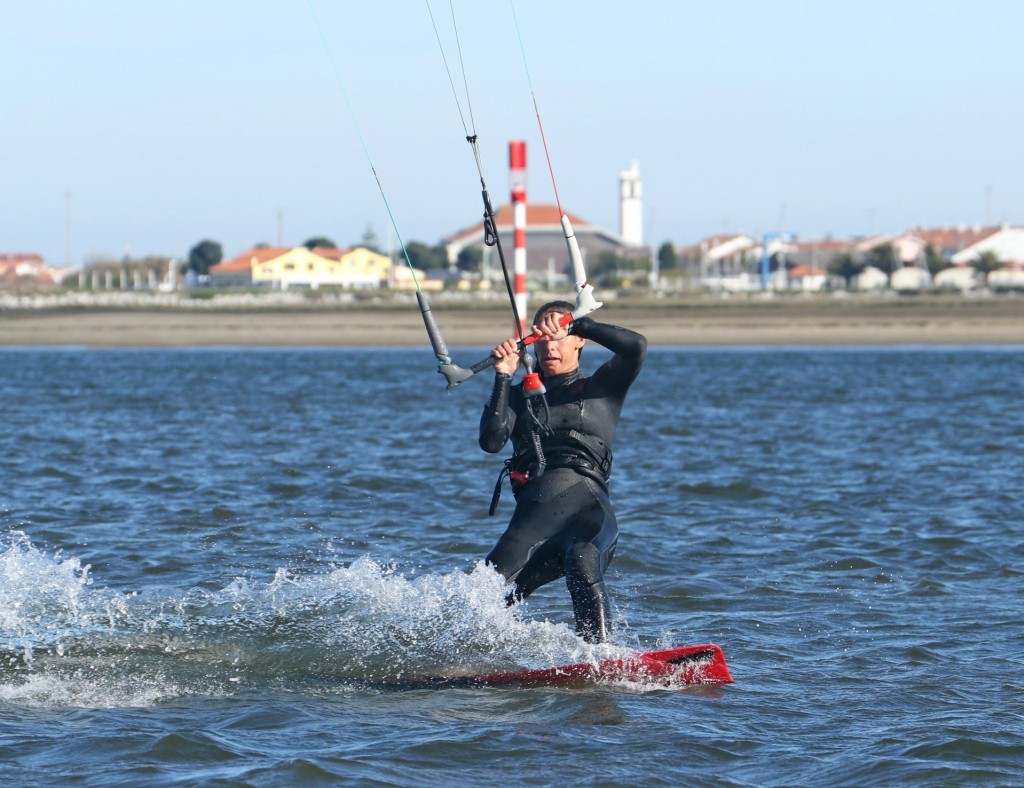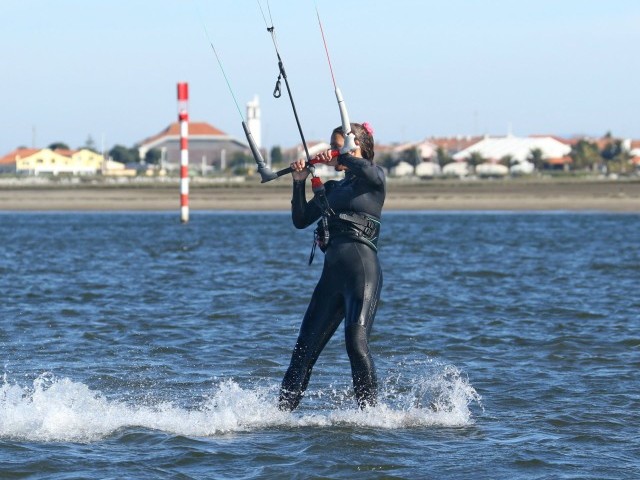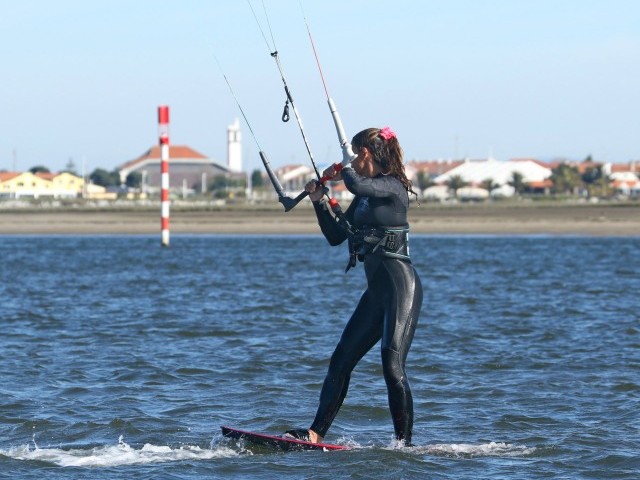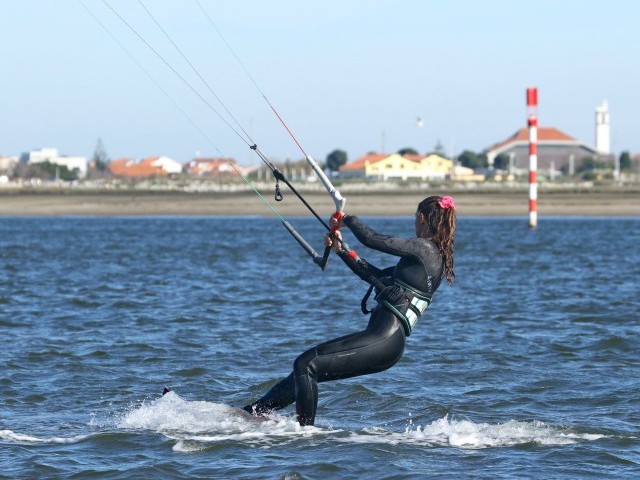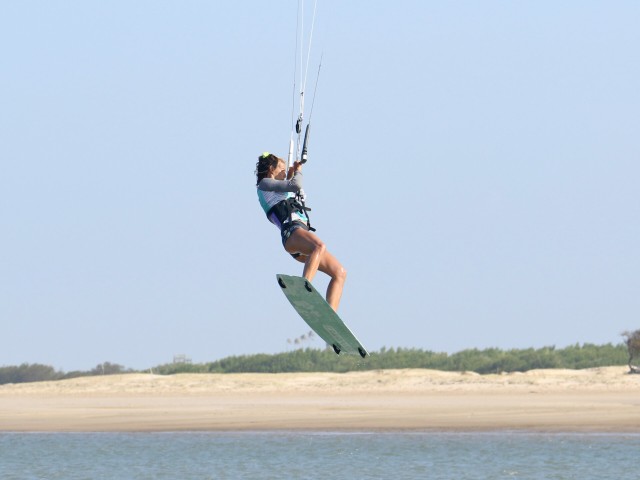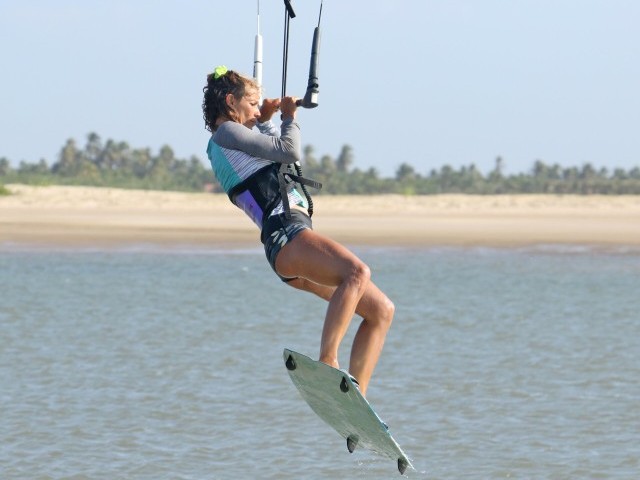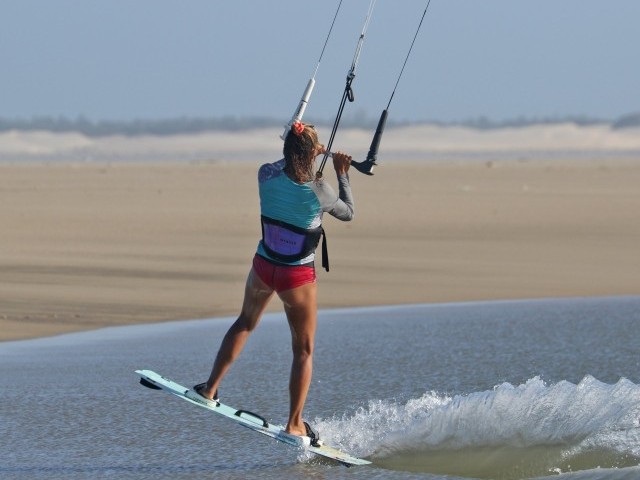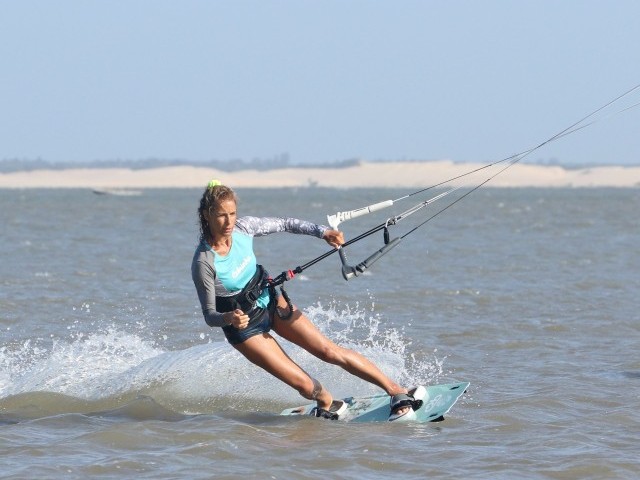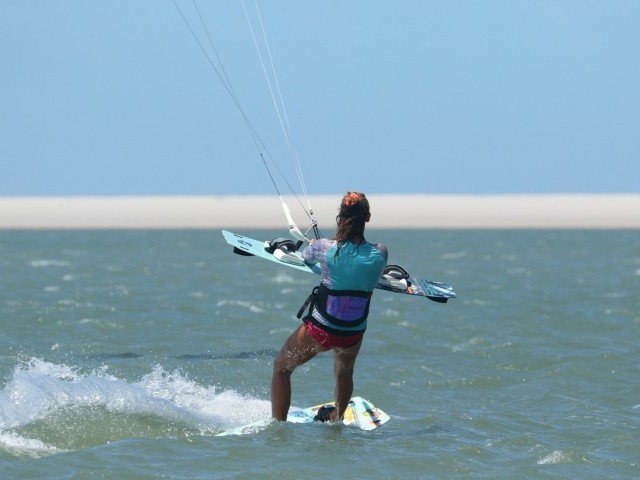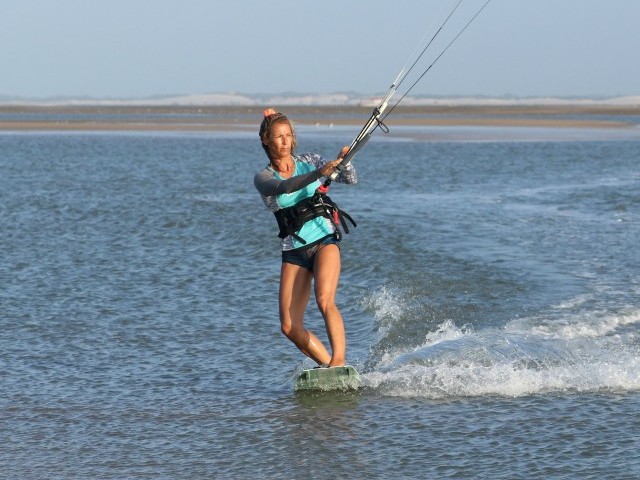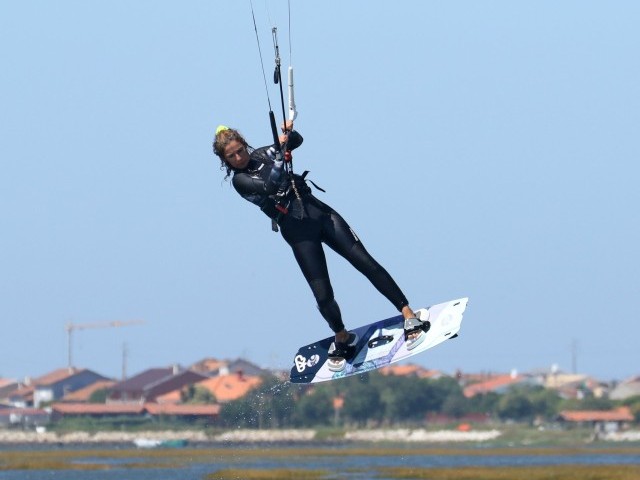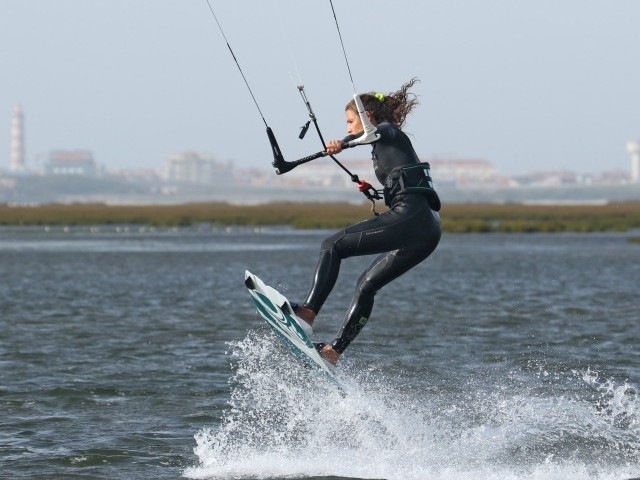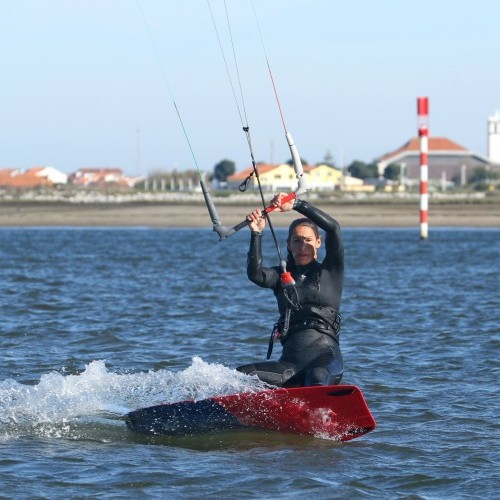
The No Slide Turn
Technique / Beginner
Introduction
We could have called this article something along the lines of "transition like a pro", or "turn around without losing any ground", but neither of those quite capture the character of this transition quite as well as the name we've plumped for. Having had a detailed look at the slide turn in our first CK'ssentials and having been plagued by a complete lack of wind since the lights went up on the tree, we thought and have been meteorologically encouraged to move those skills on to their next logical and practical step. Practical, because there are so many situations in kiting when you want to turn without giving away any of your hard-fought ground. Whether the wind is light, you're desperate to get off the beach in onshore conditions, or you just want to practice and hone your kite and board skills, you'll have plenty to gain.
Previously we extolled the virtues of the Slide Turn Transition as much for what it leads onto as for its own benefits. Now we're going to rip up the instructions and go about it in the manner that was most likely giving you trouble in the first place, not sliding! This is also a fabulous move to learn, as it really forces you to concentrate on your stance and requires pinpoint kite skills, both of which will prepare you well for all the joys to come.
So how are you going to learn the No Slide Turn? The best way to think about this is in two halves, the way in and the way out. You have to get the first half dialled to be in with a chance of coming out without losing any ground. Let us start by looking at the individual parts of each half so that you can then splice them together…
Approach Pic A.
What you're after throughout this transition is tension. In your lines, through you and into the board. With tension, you'll be able feel when and where you need to adjust, whether it's how much power or pull you need from the kite or how much power you need to release in order to achieve what you want. From start to finish, it's all about tension, so it should come as no surprise that you'll need tension on your approach. The other point is that as you are intending to change direction, you'll need to slow down whilst keeping tension. In essence, this is a balancing act between power and tension. This means edging on your approach is paramount. Make sure you're resisting with your legs, driving against the board, keeping your entire body taught. Much more achievable when you start with your kite no higher than 11 or 1 o'clock. This way, you can slow down by easing the bar out, bit by bit, without changing your position. Once you've got your speed under control, you can steer your kite slowly up. You can see that Karine has plenty of her edge in the water, both legs are driving the board away from her, and she's drifting the kite up. Note that she's looking forwards, not at her kite.
Control the Power Pic B.
As the kite rises, it will generate lift. You, however, need to keep resisting. The temptation is to sit low, but if you do, there's a possibility that you'll compromise your edge. To counter the lift from the kite, you can ease the bar out a tad more. This isn't a must though and will depend on whether the lift is too much for you to control. You're aiming to get the kite past 12 o'clock but in the most controlled of manners. Keep looking where you're going, and be aware that effort is required to edge. Looking at the pic, you can see that Karine has eased her bar out. She's still drifting the kite slowly but is very much edging forward.
Keep the Kite Moving Pic C.
As long as you can keep your edge, you can keep the kite moving. Your aim is to get it past 12 o'clock so that it's "pointing" back the other way. This has two advantages. Firstly, once the kite moves into the other side of the window, it will act as a brake, think parachute behind a drag racer (with perhaps a touch less speed). Secondly, once it stops you, it's your cue to go back the other way. Now, this is where you are tearing up the rule book. If you were slide turning, you'd be thinking about moving your weight forward and sliding the back of the board. However, you need to override your muscle memory and keep tension in the lines and tension through your board and focus on edging forwards. You can see in the pic that as the kite moves further up, Karine is still driving against her edge.
Your Cue Pic D.
Right on time. As soon as the kite goes past 12, it'll stop you. If you keep stiff against your edge and pull the bar in for some support, the kite will pull you against your edge and therefore lift you up over the board. This is the last part of the first half. You've stopped, and you've used the last puff of power in the kite to keep yourself up. In the pic, you can see that Karine's edge is still in, but she's pulled the bar in to get that lift. It's also worth noting that her bar is still steering the kite; she hasn't levelled her bar as she doesn't want the kite to stop.
The Change Pic E.
And this is the result. With your kite moving slowly across the window, an edge held against it, and you pulling the bar in. Yup, up and over the board. Before we get too excited and apologies for repeating ourselves, do ponder this balance of power against edge. Power can be passive when you're super powered up or on a large kite, or it can be generated by moving the kite; the quicker you move it, the more power it generates, and of course, a combo of these two. If, however, you don't slow down, the result will be more jump like. Ok, back to the now. Once you're up, turn your head to look back where you want to go. Karine is definitely looking back the other way.
Dive Pic F.
Now that you've got your bearings, there's only one thing for it, drop the clutch and give it some beans. Making sure that you shift your hips back over what will be your new rear foot, you can twist your shoulders to look upwind and dive the kite to accelerate back from whence you came. Make sure you keep your weight on your heels and look upwind. How hard you dive your kite will depend on the conditions and position of your kite. Your aim is not to get hauled off downwind but to edge off across the wind. It would be a great shame to undo all the good work you did to get here without sliding. You can see that Karine has shifted her weight back, opened up to look upwind and is diving the kite to go back the other way. Notice how she hasn't been overly aggressive with her steering on the bar. The reason, her kite is relatively high, and she's on a big kite with loads of lift.
Back On It Pic G.
Et voila! Once the kite pulls, you can drop your weight, resist and drive against your edge. If you haven't got much speed, stay on your edge and work your kite. You'll soon generate some power and forward drive.
Top Tips
This really is something that will hone your kite skills and is so worth practising. Without a doubt, it'll be less difficult when you have power, but with repetition, you'll soon enough have it down on any kite. The funny thing with the No Slide Transition is that it's about doing very little, very well. Edge control and balancing your power whilst feeling where your kite is. The end result, it'll improve so many aspects of your kiting as well as giving you a super-efficient method of changing direction.
As you progress, you can play with the speed that you steer the kite. Less power will require a more dynamic approach, whilst with power, you'll almost be trying not to take off if you want the tightest of turns, and you may need to momentarily stop moving the kite before diving it.
Have a look at the sequence to see all the steps married together, and then check out the video to see it in real-time.
Common Problems
The main problem is allowing your muscle memory to take you through this like a slide turn. So, ponder the difference. A slide turn is all about slowing down, changing your weight, keeping low, sliding and then moving your kite. Here it's all about edging to control speed and moving the kite across, nothing else. In principle, it's simple, but in practice, it's a whole new world.
Sitting too low and therefore needing a big, downwind pulling dive to get going. Keep resisting the entire time, and don't be afraid to be bullied by the kite. Use your bar to control power, but keep your core and legs stiff.
Staying up but still needing too big a dive. You've taken your kite too far across the window. Only take it to 12:30 or 11:30, any lower, and you just can't get the power from the dive.
Getting air! If you're taking off and getting unceremoniously dumped onto your side, it's a sure sign that you're sending the kite. It's about drifting it up and across, be more gentle with your steering and sheet in or out to control the lift.
Keystones
- Approach with tension
- Slow down by sheeting out incrementally
- Steer kite slowly across the window
- Edge until kite slows you
- Stay up, turn and dive
This technique article was in Issue 91 of IKSURFMAG.
Related
By Christian and Karine
Christian and Karine have been working together as a coaching team, running improver to advanced kitesurfing clinics since 2003.





